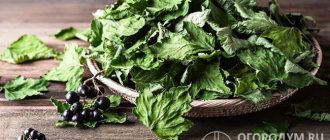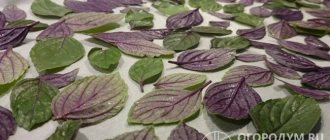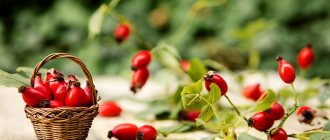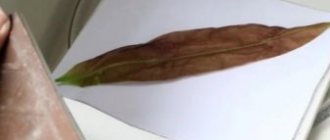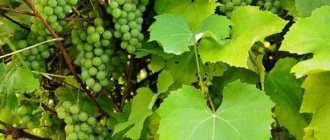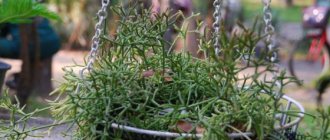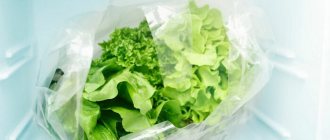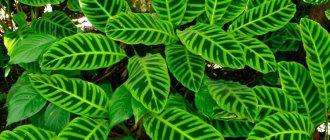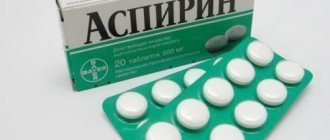Tea made from currant leaves has a subtle note of spring rain, the amazing aroma of summer and the spiritual beauty of autumn. The aftertaste of tea lasts for a long time, and its healing properties fill you with vigor, strengthen your immune system, and warm you up on cold winter evenings. Blackcurrant bushes can be found in almost every summer cottage, but not all gardeners take advantage of the unique opportunity to harvest currant leaves for tea. If you are one of them, we advise you to think twice. After all, with the arrival of autumn, the same vitamins that you buy at pharmacies for huge amounts of money fall down onto the ground. In this article we will tell you when to collect currant leaves for tea, how to do it correctly, and why tea from currant leaves is so useful.
When to collect blackcurrant leaves?
The rules for collecting currant leaves for tea vary depending on the color of the berries of the bush, the climatic conditions of its growth, and the drying method. Black currant leaves are considered the most suitable for collection. The fact is that on the lower surface of blackcurrant leaves there are special glands containing beneficial essential oils. It is to these oils that tea made from blackcurrant leaves owes its magnificent taste and aroma.
What rules are followed?
Drying is the second important stage in preparing currant greenberries for the winter. Even correctly collected, but not properly dried, they can go bad. The main thing is to comply with a number of conditions:
- warm;
- absence of dampness and direct sun exposure;
- open space in the fresh air.
They choose a place where it is warm, dry and not hot from the sun. Lay out the collection on a spread clean piece of cloth or paper. It is unacceptable to use newspapers, as the paint contains toxic components. Drying on them will not add any benefit to the leaves.
Throughout the process, the workpieces are periodically stirred so that they do not start to mold. As soon as the sheets acquire a brittle structure, they are sent to a permanent storage warehouse.
Place the resulting raw materials in hermetically sealed containers. Place it where it is dry and cool. You should not keep odorous spices or other products nearby that can imbue currant leaves with unnecessary aromas.
If it is not possible to dry the foliage in the fresh air, use the oven. Only with this method are some of the beneficial properties lost. The leaves are distributed in an even layer on a heat-resistant sheet, then placed in an oven heated to 100 °C. The door is left ajar. After 1.5 hours, the heating is reduced and the raw materials are brought to full condition.
When to collect currant leaves for the winter?
The most useful substances are contained in young leaves, so it is recommended to collect them in late spring - early summer. But experts do not recommend relying on the calendar. They are convinced that it is best to collect during the flowering period of the plant. When the plant blooms depends on the climate zone and the weather conditions of a particular year.
In addition, to the question “When should you collect currant leaves?” they will answer with confidence - “In the morning!” It is advisable that the dew on the leaves has already dried, but they have not yet had time to heat up in the sun. It is strictly not recommended to collect currant leaves in rainy weather. When dried, they may become moldy, and all your work will be in vain.
When preparing currant leaves, you should follow simple rules:
- Try to pluck or carefully cut off even, non-blackened leaves located in the upper part of the plant with pruning shears.
- Do not pick (cut) all the leaves from one branch.
- Check leaves for signs of rot or insect damage. Having discovered these, you will not only be able to get rid of low-quality raw materials, but also provide timely help to your garden pet.
- When collecting, try not to damage the plant trunk. This can lead to diseases of the bush and even its death.
You may be interested in: When to collect raspberry leaves for tea - useful tips
What are the collection regulations?
It’s easier to go to the garden, pick green currant leaves and brew delicious and fragrant tea. But it definitely won’t be of any use. And to obtain a healing drink, raw materials are collected during the flowering period. This is the stage when the vegetation is fully saturated with valuable components.
The time of day also plays an important role. Herbalists recommend collecting medicinal plants in the morning, approximately from 8 to 11 o'clock and in dry weather. This is the period when the dew has dried and the sun is not yet shining. It is not advisable to take raw foliage, since it cannot be dried properly.
Another point taken into account when collecting raw materials is the cycle of the earth’s satellite. It is recommended to select a period when the Moon is waxing.
Whole leaves are torn off, without damage or external signs of disease or insect damage. The tops of young shoots are suitable. Similar rules apply to collecting leaves of other berry crops.
When to dry currant leaves?
As we have already said, there are many technologies for harvesting currant leaves. We have already decided when we can collect currant leaves. From the first flower until the end of summer, you can brew tea from fresh, just picked leaves, but when to prepare currant leaves for the winter and how to do it correctly?
Let's consider three main options for preparations: fermentation, drying and freezing.
Freezing leaves
Freezing currant leaves for tea is a very simple option for preparing raw materials for owners of large freezers. To prepare the product you need:
- Collect currant leaves, carefully sort them, removing debris and dry pieces of branches.
- Gently rinse the leaves with warm water and lay them on a flat surface until completely dry. For faster results, it is recommended to use paper towels for drying.
- Cut the dried leaves into strips about 1 cm long, put them into portioned bags, tie them tightly and put them in the freezer.
Drying currant leaves
When to collect currant leaves for drying and how to make the raw material suitable for use? It is recommended to collect currant leaves for winter harvesting no later than the end of July.
If harvested later, toxins harmful to the body accumulate in the leaves and the amount of beneficial substances is reduced. It is best to dry the collected leaves in a dry room where there is a flow of fresh air. For example, this could be an attic or a covered veranda. To dry the leaves, they should be laid out on clean sheets and turned over regularly.
You can dry the raw materials much faster using the oven. Please note that the oven temperature should not be higher than 100%. The door should be left open when drying. Monitor the color of the leaves; if they begin to darken, remove them immediately and reduce the temperature.
Modern electric dryers can also be used to dry currant leaves. The “herb drying” mode, which most of these devices are equipped with, can easily cope with the task.
Fermentation of currant leaf
Fermentation, as a method of preparing currant leaves, is perhaps the most labor-intensive process. However, according to experts, the taste of currant tea when using this method of preparation is much richer and more aromatic.
You may be interested in: Clover tea, benefits and harms, medicinal recipes
What is fermentation? This is a special plant processing technology in which the leaf is oxidized, followed by fermentation and drying. When to prepare currant leaves for fermentation? As for drying, currant leaves for fermentation can be harvested from the beginning of flowering. However, experts believe that leaves harvested closer to autumn have greater flavor, although they pose many cooking problems. For example, they do not curl well, and twisting is one of the main stages of fermentation.
Although the fermentation process is more complicated than conventional drying, you are quite capable of mastering it. Let's start:
- To begin, place the collected leaves in the shade. They should soften a little and become elastic. The approximate drying time for raw materials is 12 hours.
- After this, you should take the leaves in your hands, try to twist and roll them, releasing the juice. Cut the resulting rolls into pieces of approximately 1 cm each. You can also chop them with a coarse grater in an electric meat grinder.
- Next, the raw materials are placed in an enamel bowl and left for 5-8 hours to ferment. The optimal temperature for this procedure is about 25 degrees.
- The last stage of fermentation is drying the leaves in the oven.
So, we have learned how to properly prepare currant leaves, but what is all this for?
Fermentation of leaves
Some experts prefer not the usual drying method, but the fermented one. They claim that it allows you to get a richer taste and aroma of currant tea.
Instructions:
- The collected leaves should be left for 5-6 hours in a warm (but not hot!) room so that they wilt slightly.
- After this they need to be crushed. Here everyone acts at their own discretion. Some experts simply crush the leaves with their hands, rolling them into plump sausages. Others are put through a meat grinder. Still others are laid out on the table and kneaded with a rolling pin. The main condition is that the leaves must give juice.
- Now the entire mass should be placed in a thick layer in a basin, pan or bucket, covered with gauze and left for 10-12 hours. The optimal temperature is +25-28 degrees Celsius.
- After this time, a pleasant smell of flowers begins to emanate from the greenery. This means that the fermentation process was successful.
- All that remains is to dry the fermented greens using any of the methods listed above.
What are the benefits of currant tea?
- Currant leaves are a source of vitamin C, and therefore a powerful assistant in the fight against colds and weakened immunity.
- Tea made from currant leaves has a diuretic effect. Thanks to this property, tea relieves swelling, fights kidney stones, diseases of the spleen and pancreas.
- Currant is a good antihistamine that brings relief from allergic rhinitis and asthma.
- Currant tea has a calming effect and improves memory.
Where is it used?
The beneficial substances contained in black currants are widely used in various spheres of life. Many medications for arthrosis or to improve vision include extracts from currant leaves.
Important! Before use, both externally and internally, it is recommended to make sure that there is no allergic reaction and consult with your doctor about the effect of decoctions of currant leaves on blood cells.
In cooking
Currant berries are more often used in cooking, the rest being used in medicine and cosmetology. However, connoisseurs will find use for other parts:
- Decoctions and teas are brewed based on various herbs, which are used internally as a preventive measure and to eliminate problems with blood vessels.
- Just like cucumbers and tomatoes, sometimes the leaves are pickled. The spicy additive goes well with meat, poultry and various salads.
- Currant leaves are often added when making homemade wines and liqueurs.
In folk medicine
Traditional medicine is also full of recipes for drugs based on currant leaves. Decoctions are used for diseases such as:
- rheumatism;
- stagnation of bile in the body;
- problems with digestion and metabolism;
- colds, to increase sweating and remove phlegm;
- decreased immunity;
- failure of the cardiovascular system.
See also
Description and characteristics of currant variety Green Haze, planting and careRead
Important! It is recommended to take it with caution for people with low blood pressure, since decoctions of currant leaves can also affect blood pressure levels.
In cosmetology
In cosmetology, currants are also used to renew and regenerate the skin, give a healthy complexion and cleanse the body from the inside. The antiseptic properties of the plant make it possible to create and use ointments that help get rid of minor scratches and successfully fight acne.
How to properly brew tea from currant leaves?
Currant leaf tea can be brewed together with regular tea or separately. It should be understood that freshly brewed tea has the greatest benefits. For brewing, you can use a regular kettle or thermos. The proportions are approximately like this:
- 1 teaspoon tea
- 1 cup of boiling water.
Cooking time is about 10-15 minutes.
Preparing raw materials for drying
Drying is the most popular and easiest way to prepare medicinal raw materials. After the excess liquid evaporates, the shelf life of the plant is extended and the maximum medicinal properties are retained. But for this it is important not only to correctly collect, but also to prepare the leaves.
Currant greens are prepared according to this plan:
- collect raw materials;
- sort and eliminate specimens with defects;
- cleanse from contaminants;
- dried in a suitable manner.
Important: Before drying currant leaves, it is not recommended to wash them. They must be as dry as possible before harvesting.
Currant greens should not be washed before the procedure, as it is highly likely that they will not be able to dry properly. Then drying will take longer, and the shelf life of the raw materials will be reduced. Washing immediately before drying will increase the risk of rotting of the collected sheets.
It’s good if the leaves were wet by rain 2–3 days before drying, and then there were sunny days. Then the plates will dry thoroughly and be clean. Some owners deliberately spray the bushes with a hose or watering can a few days before harvesting to clean them. The main thing is to make sure that it doesn’t rain for 2–3 days. Otherwise, everything will have to be put aside to let the greens dry.
If you collected currant leaves and it turned out that the bushes are dirty, then water procedures cannot be avoided. Then you will have to rinse them or wipe them with a damp cloth, and then dry them using paper towels. But in this case, the risk of raw materials becoming moldy remains.
It is necessary to prepare containers for drying currant greens. This can be a tray, wire rack or baking sheet. These devices also need to be washed, wiped with a towel, and additionally dried in air. Before laying out the raw materials, the container is covered with parchment paper, which will absorb excess moisture.
Natural product for cleansing, moisturizing and rejuvenating the skin
Currant leaf is actively used in cosmetology due to the presence of vitamins B, PP, A, C and organic acids. Under their gentle influence, the skin is moisturized, tightened and restored.
Leaf treatment for acne:
- 1 tbsp. l. dry raw materials, pour 100 ml of boiling water;
- leave for 20-30 minutes and strain.
- make compresses with the infusion, leaving it on problem areas of the skin for 25-30 minutes. The course of treatment is 2-3 weeks.
A tonic is considered no less effective for cleansing pores and improving cell metabolism. It is prepared from 20 g of leaf collection and 200 ml of water. The mixture, covered with a lid, is boiled over low heat for 10 minutes, then filtered and poured into a container with a dispenser.
The vitamin components contained in each leaf are the main helpers for maintaining a youthful face. To achieve the desired result, it is recommended to periodically conduct a seven-day course of berry spa therapy. Recipe in the picture.
Anti-wrinkle mask with essential oil
In folk medicine
Currant leaves are suitable for single and mixed brewing. The most delicious and popular combinations are:
It is not enough to collect the leaves in time; it is also important to dry them properly. To do this, it is recommended to follow three fundamental rules:
The positive effect of dry herbs on improving human health has long been proven. Therefore, gardeners try to stock up on herbs and bushes of various plants in the summer. For example, the positive influence of currants lies not only in its berries. However, in order to preserve maximum beneficial properties, you need to know when to collect currant leaves and how to dry them correctly.
First you need to spread the leaves in an even layer and leave them in the shade. For the backing it is better to use cotton or linen fabric. This way, the raw materials undergoing the drying process will not dry out prematurely and will not absorb harmful substances, as can happen when using synthetic fabrics.
It is not advisable to wash the leaves before drying, so it is worth watering the bush with a hose or watering can a day or two before harvesting. And let it dry completely.
The benefits of currant leaves are not limited to this - the vitamins and microelements they contain have a positive effect on the entire body as a whole. In order to preserve all their properties, it is important to choose the right time for collection.
